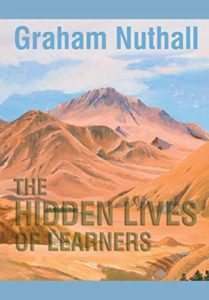In this blog, we typically highlight the benefits of prior knowledge.
For example: if a student knows a lot about baseball, she’ll be much more successful in understanding a reading passage about baseball.
That same student could struggle mightily with a passage about cricket. What’s an “over”? A “wicket”? A “badger”?
In the world of cognitive load theory, prior knowledge helps because it reduces working memory load.
An expert knows relevant definitions, concepts, procedures – and the relationships among them.
And because experts have all that knowledge in long-term memory, they don’t need to noodle it around as much in working memory.
The teaching implications of this insight:
First: find out how much prior knowledge students have on any given topic.
Second: ensure student have the prior knowledge they need before starting on any given topic. Don’t start it until they do.
NB: This second insight has important implications for many project pedagogies.
This conclusion is well settled in cognitive load theory. But: is it always true?
Is it possible that prior knowledge might increase working memory load? Could it make thinking and problem solving more difficult?
Thinking the Unthinkable
Here’s a question:
“To mitigate the effects of climate change, would it be a good idea to plant more Douglas fir, oak, and beech trees in the Black Forest?”
I know a bit about climate change, and a bit about trees, and I’m generally inclined to say “yes.” Because I’m a novice – that is, I don’t have lots of prior knowledge on these topics – the question strikes me as straightforward.
However, if I were an expert, I might draw on my prior knowledge to see additional complexities in the question.
For instance…
…those trees might be vulnerable to particular diseases or pests,
…they might harm the ecosystem in the Black Forest,
…they might – paradoxically – do some tree thing or another that would ultimately exacerbate climate change rather than mitigate it.
In this case, an expert’s prior knowledge could introduce complicating variables – and thereby increase working memory load.
A research team, made up of scholars from Germany and Australia*, tested this hypothesis.
As you would expect, they asked forestry experts and forestry non-experts to consider (roughly) the tree-planting question above.
The experts considered the question more complicated than the novices did. That is: that said that it required more thought, more simultaneous contemplation of variables, and more complex thinking..
And – here’s the kicker – their answers weren’t any better than the novice’s answers.
In Other Words
Putting all these pieces together…
Forestry experts’ higher level of prior knowledge increased their perception of the problem’s complexity;
It did so (probably) because they thought of additional variables not included in the question;
These additional variables increased working memory load;
Because of additional strain on working memory, these experts didn’t benefit from their prior knowledge – and didn’t answer the question more effectively than novices.
Wow.
The research team then went ahead and tested this same idea with 4th graders in Australia.
As often happens in research, the details get complicated. The headline is: when they tested a classroom analog of the same problem, they got somewhat similar results.
Students with higher levels of prior knowledge DID perceive the cognitive load to be higher.
However, when those students solved problems, they scored higher than when they did not have relevant prior knowledge. (Remember: for the forestry example, higher cognitive load eliminated the experts’ advantage in solving the problem.)
In other words: the potential dangers of prior knowledge do show up in the classroom, not just in abstract research exercises.
Teaching Implications, Take II
Above I wrote:
First: find out how much prior knowledge students have on any given topic.
Second: ensure student have the prior knowledge they need before starting on any given topic. Don’t start it until they do.
Based on this study, I think we should add another implication:
Third: stop and consider – how might a student’s expert prior knowledge interfere with their learning of this concept? What other concepts or procedures might they draw into a question in ways that unhelpfully complicate their thinking?
At this point, I don’t think we have enough research into the dangers of prior knowledge to have refined or thorough guidance in answer to those new questions.
I do think, however, we should get in the habit of asking them.
TL;DR
Typically, prior knowledge benefits students by reducing working memory load.
Therefore, typically, we should ensure they have relevant prior knowledge before starting a topic.
In some cases – according to this research – prior knowledge can complicate thinking when experts bring in too many ideas from their knowledge base.
In these cases, we should be sure to think through those potential dangers, and head them off as best we can.
And: we should follow this research pool. It’s an intriguing topic!
* One of the researchers here is none other than Ollie Lovell, who wrote an EXCELLENT book on Cognitive Load Theory for teachers. You can read my review here.
Endres, T., Lovell, O., Morkunas, D., Rieß, W., & Renkl, A. (2022). Can prior knowledge increase task complexity?–Cases in which higher prior knowledge leads to higher intrinsic cognitive load. British Journal of Educational Psychology.
 About Andrew Watson
About Andrew Watson 




















